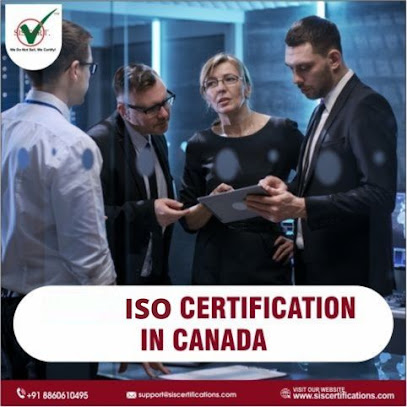What is the whole process for ISO certification?
The process for ISO certification involves several steps that organizations need to follow to demonstrate their compliance with a specific ISO standard. While the exact process can vary depending on the ISO standard, the certification body, and the organization's specific circumstances, here is a general overview of the steps involved in obtaining ISO certification:
Choose the Relevant
ISO Standard:
Identify the ISO standard that is relevant to your industry and business objectives. Different ISO standards cover various aspects such as quality management, environmental management, information security, food safety, and more.
Gap Analysis:
Conduct a gap analysis to assess your organization's current processes and practices against the requirements of the chosen ISO standard. Identify areas that need improvement to achieve compliance.
Develop a Plan:
Create a detailed plan that outlines the steps, resources, and timeline needed to achieve ISO certification. This plan should include tasks such as policy development, procedure creation, employee training, and documentation.
Policy and Procedure
Development:
Develop and implement policies and procedures that align with the requirements of the ISO standard. These documents define how your organization will achieve and maintain compliance.
Employee Training:
Provide training to employees about the ISO standard, its requirements, and their roles in ensuring compliance. Awareness and engagement from all levels of the organization are crucial.
Documentation:
Create and organize documentation that demonstrates how your organization meets the ISO standard's requirements. This documentation includes policies, procedures, work instructions, records, and any other relevant materials.
Internal Audits:
Conduct internal audits to assess the effectiveness of your processes and controls in meeting ISO requirements. Internal audits help identify areas that need improvement before the official certification audit.
Corrective Actions:
Address any findings or non-conformities identified during internal audits. Implement corrective actions to resolve issues and improve your processes.
Select a
Certification Body:
Choose an accredited certification body that is authorized to provide ISO certifications. Verify their credentials and reputation in the industry.
Certification Audit
(Stage 1):
The certification process typically starts with a Stage 1 audit, which is a documentation review. The auditor assesses your organization's documentation and readiness for the full audit.
Certification Audit
(Stage 2):
The Stage 2 audit is an on-site assessment where the certification body's auditors evaluate your organization's processes, practices, and compliance with the ISO standard. They review documentation, interview employees, and observe operations.
Audit Report and
Findings:
The auditors provide an audit report that outlines their findings and any non-conformities. Non-conformities must be addressed within a specified timeframe.
Certification
Decision:
Based on the audit findings and corrective actions taken, the certification body makes a decision on whether to grant ISO certification. If all requirements are met, your organization receives the certification.
Ongoing Surveillance
Audits:
After certification, your organization will undergo regular surveillance audits to ensure continued compliance with the ISO standard. These audits typically occur annually or semi-annually.
Certification Renewal:
ISO certifications are usually valid for a certain period (e.g., three years). Before the certification expires, your organization must go through a recertification process to renew the certification. This process involves a comprehensive audit similar to the initial certification audit.
Throughout the ISO certification process, maintaining a
commitment to continuous improvement is essential. The certification
demonstrates that your organization not only meets the ISO standard's
requirements but also continuously strives to enhance its processes and
practices.


Comments
Post a Comment